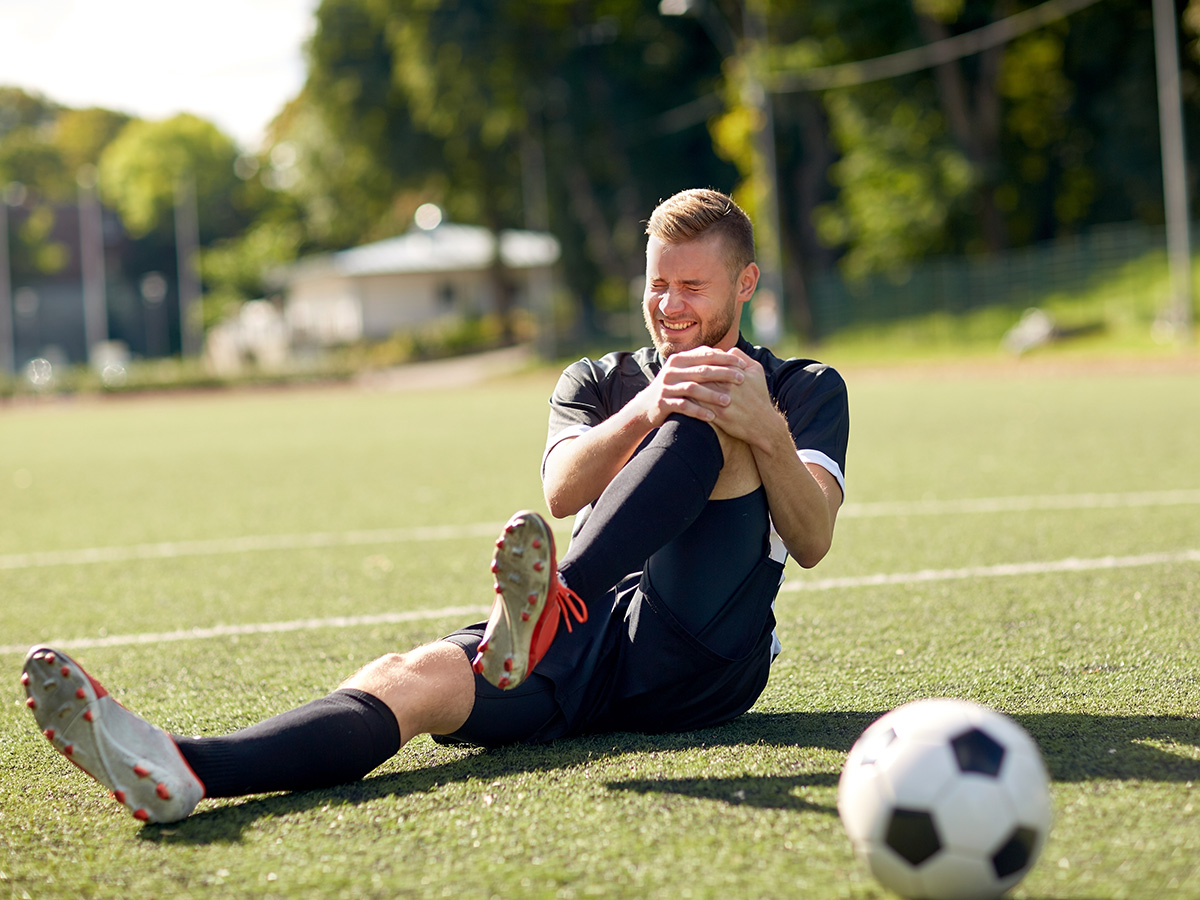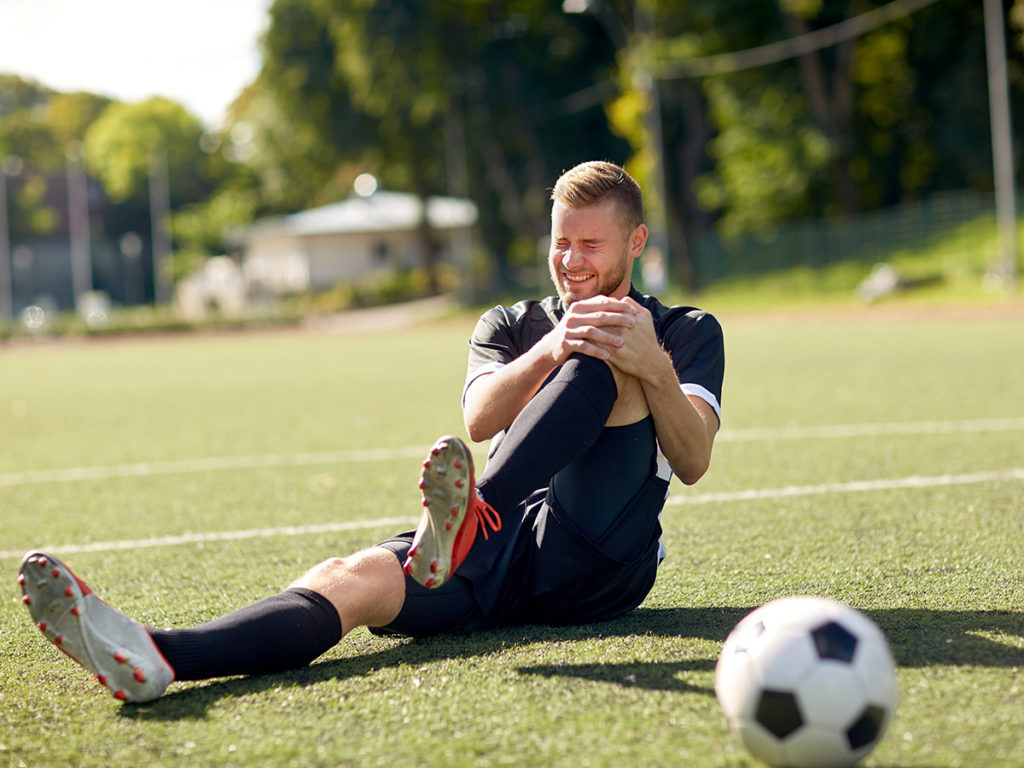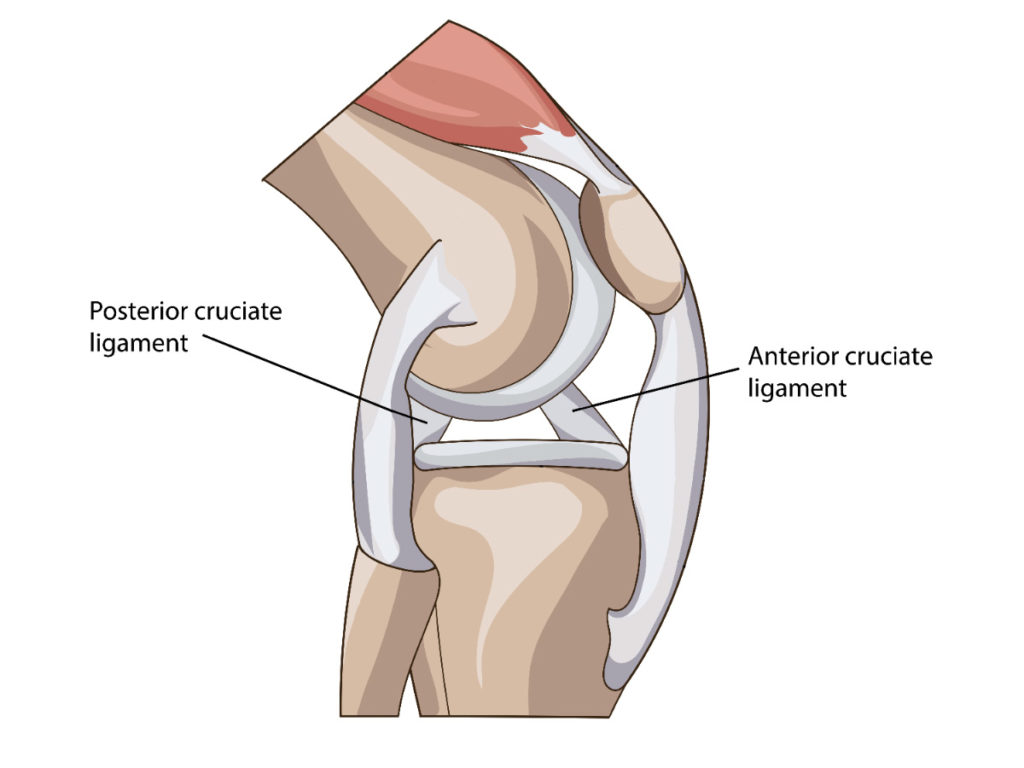

Anterior cruciate ligament (ACL) injuries are common in Australia. In fact, Australia has historically held the highest rate of ACL injury in the world. Despite a lot of media attention, ACL injuries are still poorly understood by sportsmen and women as well as everyday Australians who can also suffer an ACL injury from undertaking social and leisure activities.
We believe that knowledge is power, so in this article our experienced physiotherapists will shed light on all aspects of ACL injuries. We’ll also look at common recommendations for how best to reduce the likelihood of suffering an ACL injury.
What Is An ACL Injury?
In order to best understand an ACL injury, it’s important to understand what the ACL is and where it is located. Your anterior cruciate ligament is one of two cruciate ligaments that sit within your knee joint and connect to both your shin bone (tibia) towards the front of the bone, and your thigh bone (femur) towards the back of the bone. The other ligament is the posterior cruciate ligament, and it also connects both bones, but in the opposite direction, starting at the front of the femur and connecting to the back of the tibia. In this way, the two cruciate ligaments create a cross within the joint.

Picturing the two bones of the knee joint, it is the ACL that plays an important role of preventing the tibia from being able to slide too far forward compared to the femur, which would otherwise injure and disrupt the knee joint. An ACL injury is when this stabilising ligament is injured, whether that’s a strain, tear, or complete rupture of the ligament.
How Do ACL Injuries Happen?
Injuries to the ACL occur when the ligament is stretched past the point that it can safely handle, often when the body’s own momentum drives itself forwards while the tibia remains in contact with the ground. ACL injuries commonly occur during sports that involve pivoting or cutting manoeuvres, when making a rapid stop during running, or when landing awkwardly from a jump. ACL injuries can also occur in a collision, such as being hit with a soccer ball, a car accident, or being forcefully pushed or tackled from behind, where the foot and lower leg are still planted firmly on the ground while the upper body and the femur are thrust forwards.
What Are The Signs & Symptoms Of An ACL Injury?
If you injure your ACL, you may notice a giving way sensation at the time of injury, followed by a weak or unstable feeling in the knee, swelling, and difficulty bearing weight on the knee. Some people describe a “popping” sensation but this is not always the case. Sometimes other structures in the knee, such as the bone or cartilage, can be injured at the same. Your physiotherapist or sports and exercise physician will perform a thorough examination to help determine the extent of the injury.
Can ACL Injuries Be Prevented?
While some of the events that lead to an ACL injury, like a collision during sports, can’t be prevented, there is a growing body of evidence that addressing biomechanical and neuromuscular risk factors may reduce a person’s risk of ACL injury. Many of these studies have been conducted in women, given that some evidence suggests that women are 3-6 times more likely to sustain an ACL injury compared to men. Some risk factors that may be manageable include:
- Landing with the knee in an adducted position – as a result of underlying ligament dominance where where muscles do not sufficiently absorb the ground reaction forces, the joint and the ligaments must absorb high amounts of force over a brief time period when landing in this position. High amounts of force sustained over a short period of time lead to higher impulse forces, which is what likely results in ligament rupture
- Low flexion angle when landing – as a result of underlying quadriceps dominance, where there is a tendency to use the quadriceps muscles at the front of the thigh, which keeps the knee in a more extended position, the ACL injury risk can be increased
- Asymmetrical landings – having one preferred (dominant) leg can create muscle asymmetry between the legs, which may increase the risk of ACL injury. Studies looking at ACL injuries in women have also shown that during an ACL tear, most if not all of the weight is on a single leg
- Poor centre of mass control – as a result of core dysfunction, the trunk muscles are not precisely controlled during movement, which can increase the risk of ACL injury
While preventative screenings are one way to help prevent ACL injuries, other interventions such as dynamic warm-up programs, have been shown to decrease the risk of a non-contact ACL injury by up to 70%. Prevention should also be targeted to those that have already had an ACL injury – those who have sustained an ACL injury have a greater chance of reinjury. This increased risk has been observed to be as high as 37.5% after ligament reconstruction surgery. In our experience, we find that strengthening the quads, hamstrings and glutes, mobilising the hip, and refining jumping and landing techniques can go a long way in reducing the risk of an ACL injury.
Physiotherapy Treatment For ACL Injuries
Treating ACL injuries starts with a comprehensive assessment to understand the nature and severity of your injury, confirm your diagnosis, and identify any other structures that may have been injured together with your ACL.
From here, we’ll discuss the treatment options that would be suitable given your personal circumstances, as your treatment will be guided by your activity levels, injury history, preferences and more. The two primary classes of treatment are surgical or non-surgical, and in both circumstances the recovery and your ability to return to full function can be lengthy – around 8-9 months on average for both athletes and non-athletes, though this can range from six months to over one year.
If you opt for surgery, our physios will work with you to prepare you for surgery and then all throughout your recovery. Your physio treatment with us, regardless of your choice of treatment, will help with:
- Reducing pain and inflammation to improve your comfort through daily life
- Restoring knee function and movement range
- Strengthening the muscles around your knee to best help support and stabilise your knee joint, particularly the quadriceps and hamstrings
- Strengthening your calves and glutes
- Restoring your flexibility
- Improving your neuromuscular control, proprioception, agility and balance
- Once significant recovery is made, improving your technique and function during both sports and daily living, including walking, running, squatting, hopping and landing.
- Return-to-sports rehab
- Working to reduce your chance of re-injuring your ACL
ACL Injury FAQs
Why are women thought to be at a higher risk of ACL injuries than men?
It is thought to be associated with the anatomical differences between men and women. On average, women have a wider pelvis than men, which can change the mechanics and forces on the lower limbs. Hormonal differences, such as less testosterone which is responsible for muscle density, and more estrogen, can lead to greater ligament laxity and a greater risk of injury.
If I can walk after a knee injury, does that mean it’s not my ACL that’s hurt?
No, many people are still able to walk after injuring their ACL, though it may prove more difficult. The only way you should rule out an ACL injury is through being diagnosed by a health professional.
Will an ACL injury end my sports career or participation in social sports teams?
No. You will need downtime to recover that will likely see you miss the rest of your season, but not your sporting career or future sports participation, except for exceptional circumstances. For example, in the 2021 NRL season, 9 players sustained ACL injuries or tears, and all are expected to return this year.
How can I avoid surgery?
You can avoid surgery by taking the non-surgical treatment approach, however you should discuss this with your physiotherapist to understand all of your options and the pros and cons of each approach, so you can make the best informed decision about what’s right for you. For some people, surgery may be more likely to yield better outcomes, especially for those that are very athletic.
If it’s not an ACL injury, what else could be causing my knee pain?
You may have a meniscus (cartilage) injury, a collateral ligament injury or a PCL injury, a knee dislocation, or a fracture in the area.
I think I’ve injured my ACL. What should I do?
Book in to see your Allsports physiotherapist. Our approach to care focuses entirely on you, with our practitioners taking the time to listen to your concerns, diagnose your injury, and explain the different treatment options available to you. We then work with you to form a treatment plan that helps you achieve your goals, reduce your pain, improve your comfort, and get you on the road to recovery.
Book your appointment with your local Allsports physio team online or call the clinic nearest you.
References
[1] https://onlinelibrary.wiley.com/doi/abs/10.5694/mja17.00974
[2] https://bjsm.bmj.com/content/55/17/984
[3] https://www.ncbi.nlm.nih.gov/pmc/articles/PMC3096145/
[4] https://www.ncbi.nlm.nih.gov/pmc/articles/PMC4062295/
[5] https://pubmed.ncbi.nlm.nih.gov/18658019/
[6] https://pubmed.ncbi.nlm.nih.gov/31895299/
[7] https://pubmed.ncbi.nlm.nih.gov/28217571/
[8] https://share.upmc.com/2015/04/acl-reconstruction-surgery-recovery-time/
